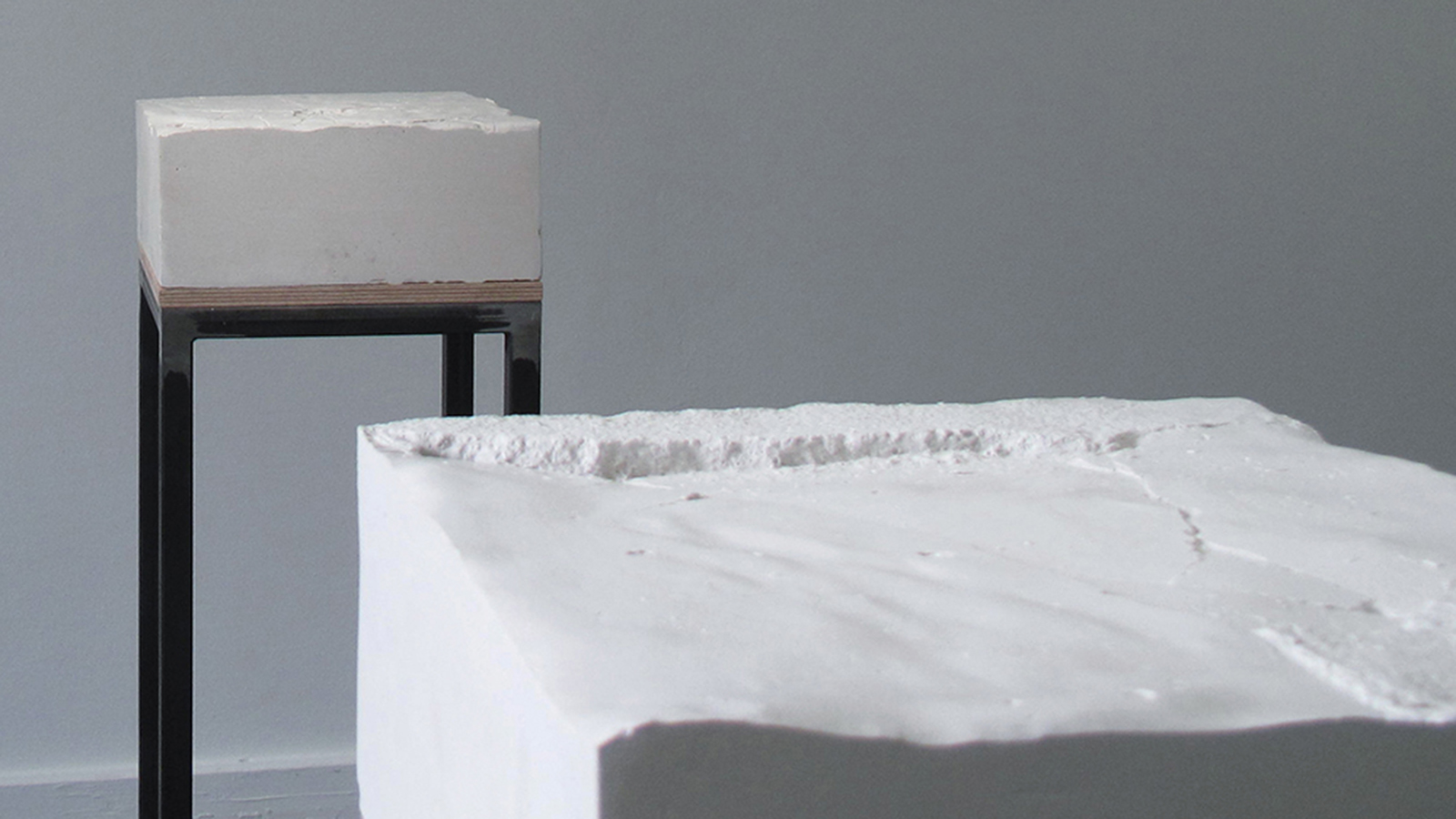Looking at the landscape, observing its topography we stay in oblivion, not knowing how much time has past and how much force was needed to come to this moment we gaze into. By cutting into the landscape, we discover multiple layers. Although often invisible, a radical change of the surface we walk on is caused by deep, inner, continuous drifting of tectonic plates. Due to the slow, invisible migration of these plates and their interaction, this seemingly static landscape in front of us is constantly being recreated. Time is the crucial factor, but the most difficult to grasp.
If buildings are observed in the same way, we notice similar changes in their seemingly stable structures. “Landscapes” are precise plaster casts of cracks of architectural elements in the city. Placed horizontally, on plinths they start to resemble these slowly formed landscapes.
—
Special thanks to: KulturKontakt, Vienna, AT





